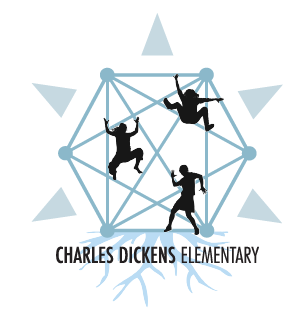About Us
Charles Dickens Elementary School is located in East Vancouver. With deep gratitude and respect, we are honoured to be learning and unlearning on the ancestral and unceded lands of the xʷməθkʷəy̓əm (Musqueam), Sḵwxwú7mesh Úxwumixw (Squamish Nation) & səlilwətaɬ (Tsleil-Waututh Nation). Dickens has a population of about 440 students. The staff, both long-time and newcomers, have come to Dickens because of a strong desire to join and be part of this unique community. We embrace a philosophy where multi-age classes, committed team-teaching practice and project-based learning are common throughout the school. The main tenets of our child-centered program are that the child is the focus of education; that social responsibility and decision-making must be fostered; that learning is continuous; and that the purpose of evaluation is to promote further authentic learning.
Most classes are organized with two or three grade levels and taught with a multi-age philosophy. Dickens is a caring, child-centered school and student leadership is nurtured. The staff is committed to collaborative decision-making and work as a Professional Learning Community. We are a Collaborative Early Literacy School and offer Reading Recovery for Grade One students. In addition to the mainstream school community, Dickens is home to a district ELSP class supporting students with unique learning needs. Dickens has an active and supportive Parent Advisory Council (PAC) with high parent involvement in the classrooms and throughout the school. PAC fundraising events such as the Spring Fling help connect the community to Dickens.
The physical space of our school building is well utilized. With its wide corridors, sliding glass garage-style doorways, and adjoining classroom spaces, it is conducive to the child-centered, group learning philosophy that the community has embraced for many years. The multipurpose room and gym are additional community spaces that reinforce the multi-age group experiences such as the student-led Monday Morning assemblies. Dickens offers a variety of extracurricular activities, sponsoring cross-country, volleyball, basketball, Ultimate and track & field teams for both the primary and intermediate students. Students also have opportunities to participate in other physical activities that may be offered throughout the year, as well as school-wide programs and presentations. Student leadership is supported and shared through various school opportunities such as student-led assemblies, buddy reading, library monitors, studentcouncil, green team, and lunch monitors. Students come together to celebrate one another and the unique gifts we all bring by participating in Winter and Spring concerts and the talent show.

